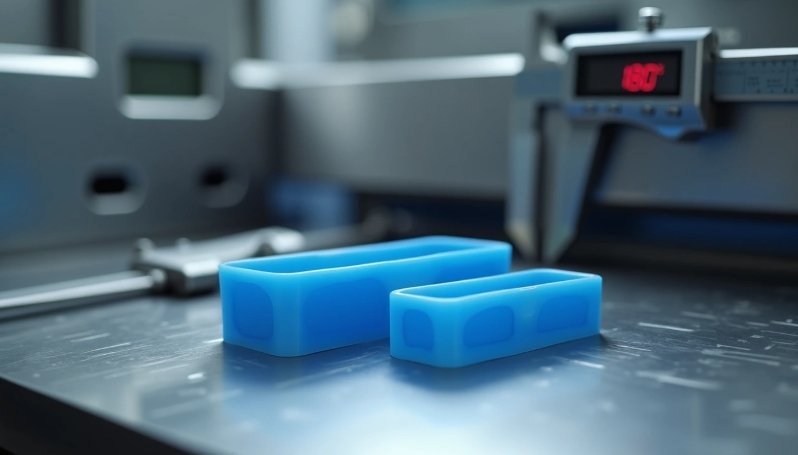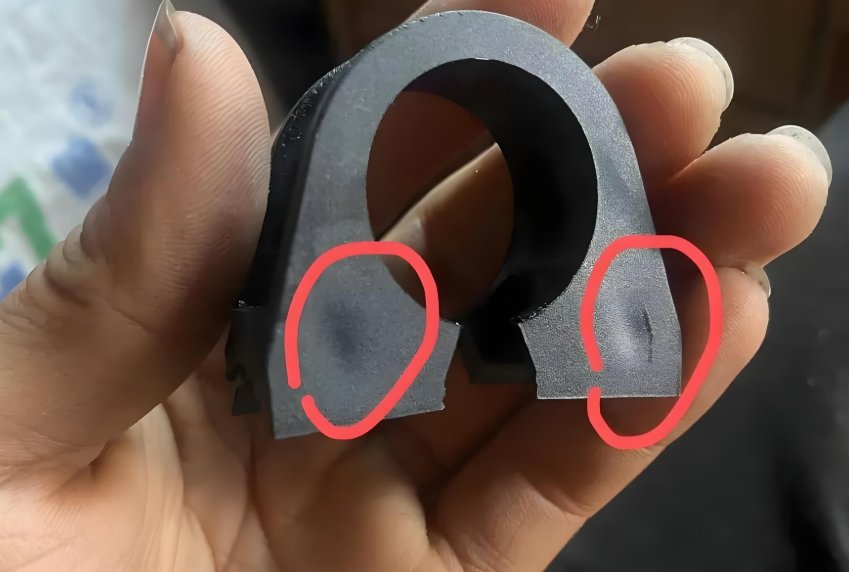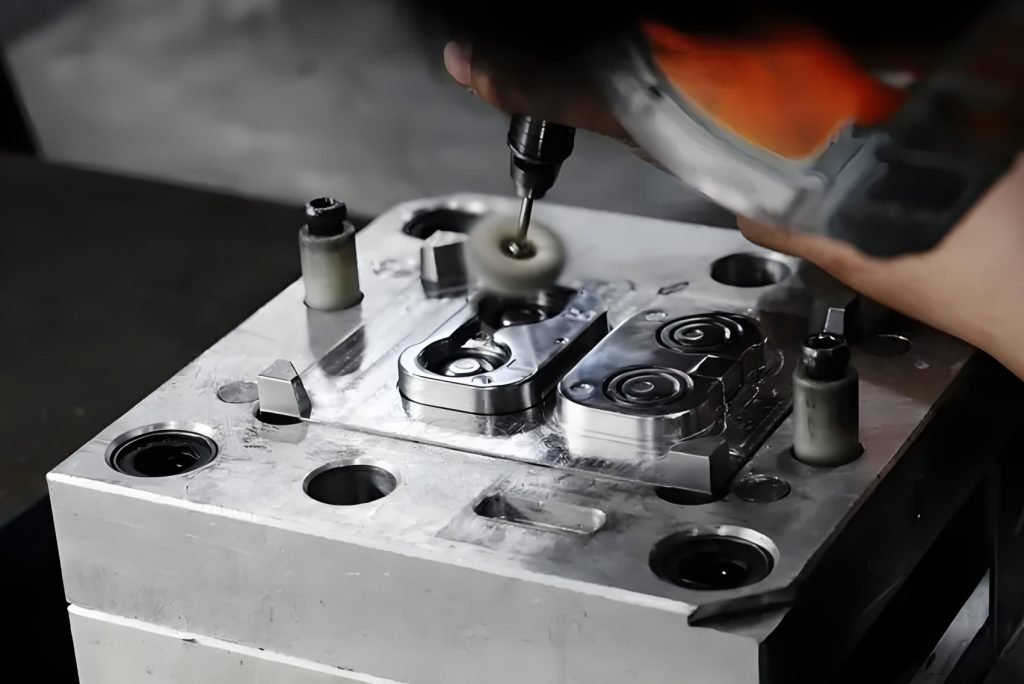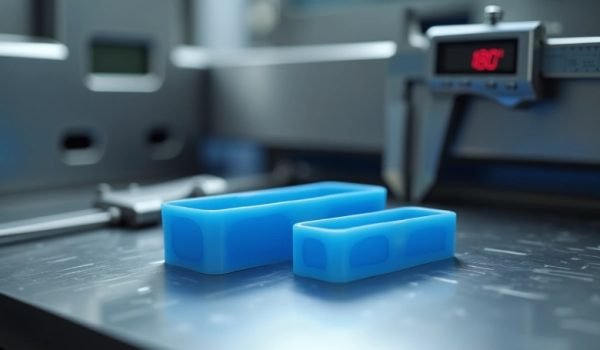Injection molding is a popular manufacturing method used to produce plastic parts with speed and high precision. However, one of the challenges during this process is shrinkage, which can lead to dimensional inaccuracy, warping, and product defects. Shrinkage happens when the molded material cools down, hardens, and reduces volume. Understanding how to reduce shrinkage in injection molding is key to improving product quality and consistency in mass production.
Manufacturers can minimize shrinkage by optimizing key factors such as material selection, mold design, processing conditions and cooling time. This article will give you practical tips and proven strategies to reduce shrinkage during the injection molding process. Whether you’re dealing with thermoplastics or high performance resins, applying these techniques will improve part accuracy, surface finish and overall efficiency in your molding operations.

What is Shrinkage in Injection Molding?
Shrinkage in injection molding is the slight loss of dimension of plastic parts as they cool and harden. Plastic injected into a mold is hot and liquid. It begins to shrink as it cools within the mold and later after ejection. It’s a natural part of the process, but manufacturers must closely foresee it so that the end product is the same as planned.
Shrinkage doesn’t occur instantly. It occurs in stages. Initially, as the plastic cools inside the mold, it begins to shrink. Next, when the part has been ejected, it continues cooling and shrinks slightly more. Even then, additional shrinkage can take place over time because the part reaches room temperature and equilibrates its moisture content.
Why does shrinkage happen during cooling?
The underlying mechanism of shrinkage is based on physical principles. When polymers cool, their molecular structure changes and they contract. This is due to:
- Density changes: The difference between the density of molten plastic and its solid state
- Molecular rearrangement: Especially in semi-crystalline polymers, where molecules organize themselves into more compact crystalline structures
- Thermal contraction: All polymers contract as temperature decreases
In general, plastics contract due to increased pressure during filling and packing and then contract further due to reduced temperature during cooling. This is why pressure and temperature control are critical in managing shrinkage.
Mention material properties, temperature and part design.
Several factors affect how much a part will shrink:
- Material composition: Semi-crystalline polymers (such as polyethylene) shrink more than amorphous polymers (such as polystyrene) since their molecules pack more tightly when cooling
- Processing conditions: Temperature, pressure, injection speed and cooling time all influence shrinkage rates
- Part design elements: Shrinkage is influenced by wall thickness, gate size and flow direction; thinner walls and larger gates minimize shrinkage. In-flow and cross-flow directions shrink differently.
- Fillers and Additives: Substances such as ceramic or glass fibers are commonly introduced into plastics to limit shrinkage. These fillers expand less than the plastic does thermally, stabilizing the part while it cools.
- Molecular Weight: High-molecular-weight plastics are more viscid and require more pressure to fill the mold fully. If such pressure is not sufficient to adequately pack the material, it shrinks more as well.
Additives such as ceramic and glass fibers can decrease shrinkage because they possess lower thermal expansion rates than the parent polymer. Molecular weight also comes into play—increasingly high molecular weight resins will tend to be higher in viscosity and need more packing pressure to counteract any tendency to shrink.

Causes of Injection Molding Shrinkage
Shrinkage due to injection molding takes place when plastic components shrink during cooling and hardening. It is a natural process but being aware of its causes will reduce its effects. Three principal sources are responsible for shrinkage: material type, mold and process conditions.
Material Type plays a big role. Amorphous plastics like ABS or polystyrene have a loose, random molecular structure. These tend to shrink more evenly and usually less than semi-crystalline plastics. Semi-crystalline plastics like nylon or polypropylene have molecules that arrange into tight, ordered structures when cooling, leading to more shrinkage, especially across the flow direction.
Mold Design also affects shrinkage. The location of the gate (where plastic enters the mold) determines how evenly the plastic flows and cools. If the gate is placed poorly, some areas may shrink more than others. Wall thickness matters too—thicker walls cool slowly and shrink more, while thinner walls cool faster and shrink less. Good cooling system design helps maintain even cooling which reduces uneven shrinkage and warping.
Processing Conditions, such as how fast the part cools, how much pressure is used to inject the plastic and how long the pressure is held also impact shrinkage. Faster cooling can lead to higher shrinkage, while proper holding pressure can push more material into the mold to reduce it.
Overall, shrinkage in injection molding can’t be avoided entirely, but by understanding how material type, mold design and processing settings affect it, manufacturers can better control the process and make parts that are accurate and consistent.
Understanding Part Shrinkage in Injection Molding
Individual parts in injection molding behave differently during cooling which directly affects their final dimensions. This variability is a big challenge for manufacturers who want consistent results.
How Parts Behave Differently During Cooling
Injection molded parts cool differently based on several factors. Parts with thinner walls cool faster and shrink less compared to thicker sections that cool more slowly. The thermal diffusivity of the specific composite material also plays a big role, materials like copper-filled polypropylene cool faster than others.
The cooling rate decreases gradually from when the plastic resin enters the mold until the last cavity is filled. Interestingly, filled thermoplastics transfer heat much faster than conventional thermoplastics, sometimes causing them to freeze off before completely filling the cavity. This premature solidification can lead to incomplete fills and reduced crystallinity.
Predicting and Compensating for Part Shrinkage During Mold Design
Precisely predicting shrinkage is essential for achieving success in injection molding. Mold designers compensate by oversizing the mold cavities according to the expected shrinkage rates. For example, a 10-inch long part with a shrinkage factor of 0.005 would require a cavity of 10.050 inches.
For intricate parts, simulation software yields useful information prior to starting physical production. Simulation programs are capable of predicting bi-directional shrinkage factors, checking the efficiency of cooling and detecting defects. Advanced techniques such as 3D Volume Shrinkage Compensation Method are utilized by certain manufacturers to resolve shrinkage variation in different part sections.
Critical Dimensions and Tolerances
As the size of the part increases, it gets more challenging to maintain tight tolerances. For instance, a 200mm feature with a ±0.1mm tolerance is more difficult to manage than a smaller feature with the same tolerance. That’s why designers compare which dimensions are most challenging to manufacture precisely using the Percentage of Tolerance (POT).
Consistency in wall thickness is a good thing. Evenly sized walls shrink more uniformly, so it is easier to maintain tolerances. Material selection also comes into play—amorphous plastics tend to have more dimensional stability than crystalline plastics that shrink more upon cooling.
Due to these issues, it is necessary to recognize Critical-to-Quality (CTQ) dimensions early on in the design stage. This enables manufacturers to concentrate their efforts in the most important regions of the part.

Strategies to Reduce Shrinkage in Injection Molding
Several strategies exist for manufacturers to minimize injection molding shrinkage and improve part quality. Manufacturers can achieve better dimensional accuracy and reduce defects by choosing the right material, designing optimally and controlling the process.
1. Choose the Right Material
Material choice affects shrinkage rates. Amorphous polymers like polycarbonate (0.005–0.007 in/in) and ABS (0.0055–0.008 in/in) shrink less than semi-crystalline materials like polypropylene (0.013–0.019 in/in). Glass-filled resins reduce shrinkage—20% glass fibers in PP can reduce shrinkage by more than 80%. Materials that contain fillers such as talc or minerals help minimize shrinkage and enhance stiffness.
2. Optimize Mold Design
Mold design is critical to shrinkage control. Uniform wall thickness prevents differential shrinkage that causes warping. Proper cooling channel placement ensures even temperature distribution in the mold. Most importantly, mold cavities must be slightly enlarged for the anticipated material shrinkage. For precision parts, include demolding slopes to reduce stress during ejection.
3. Adjust Processing Parameters
Process parameters offer immediate shrinkage control opportunities. Higher injection and holding pressures fill the mold completely, reducing shrinkage as shown in studies that show a 4.75% reduction in warpage through optimized parameters. Holding pressure until the part solidifies limits movement during cooling. Mold temperature control is equally important—hotter molds produce less shrinkage than colder ones. Balancing cooling rates prevents internal stresses while maintaining dimensional stability.
4. Use Simulation Tools
Modern simulation software provides powerful predictive capabilities. Programs like CADMOULD Warp and Moldex3D allow manufacturers to see expected shrinkage before production begins. These tools simulate fiber orientation effects, thermal distributions and stress states. By testing different scenarios virtually, manufacturers can optimize designs and parameters without physical prototypes.
5. Post-Molding Techniques
Post-processing methods can further reduce shrinkage effects. Rapid cooling in room-temperature water can prevent post-mold shrinkage by quickly lowering the temperature of the inner walls. However, this technique requires careful application to avoid stress-induced cracking. For some applications, using chemical blowing agents, porous injection molding reduces sink marks while decreasing part weight.
Common Mistakes that Increase Shrinkage
Despite understanding shrinkage factors, manufacturers frequently make expensive blunders that detract from part quality and accuracy of dimensions. Such mistakes generally result from forgetting fundamental details of the injection molding process.
One major cause is neglecting mold maintenance. As molds become older without upkeep, their dimensional accuracy degrades because of residue accumulation and wear, which creates uneven cavity temperatures and inconsistent shrinkage in parts. Consistent cleaning and checking are necessary in order to have stable mold performance.
Another mistake is ignoring material data sheets. Many manufacturers skip reviewing the technical specifications of resins, assuming general performance will suffice. However, these sheets often reflect properties measured under ideal, standardized conditions which rarely match real-world processing environments. Misinterpreting or overlooking this data leads to wrong material choice and inaccurate shrinkage estimates.
Lastly, skipping design simulation is a costly error. Without digital modeling, issues like warpage and uneven shrinkage will only be seen during tooling or production, requiring rework. Modern simulation software such as Moldflow enables visualization and mitigation of these risks up front, allowing improved design decision-making and optimized mold geometry. Manufacturers that skip this step threaten structural flaws, increased cycle time and reduced product quality
Conclusion
Shrinkage is inherent in the molding operation but can be managed. Manufacturers can rationally choose to minimize shrinkage in injection molding by learning about material behavior, particularly the distinction between amorphous and semi-crystalline polymers. Optimizing mold design, consistent processing parameters, and simulation software decrease shrinkage effects. Using proper additives, such as glass fibers, aids in dimensional stability.
Don’t make common mistakes like neglecting mold maintenance or skipping design simulation. Proactively manage injection molding shrinkage and manufacture accurate high quality parts that satisfy close tolerances and customer requirements. Addressing part shrinkage in injection molding early on means more efficient production and better results.




